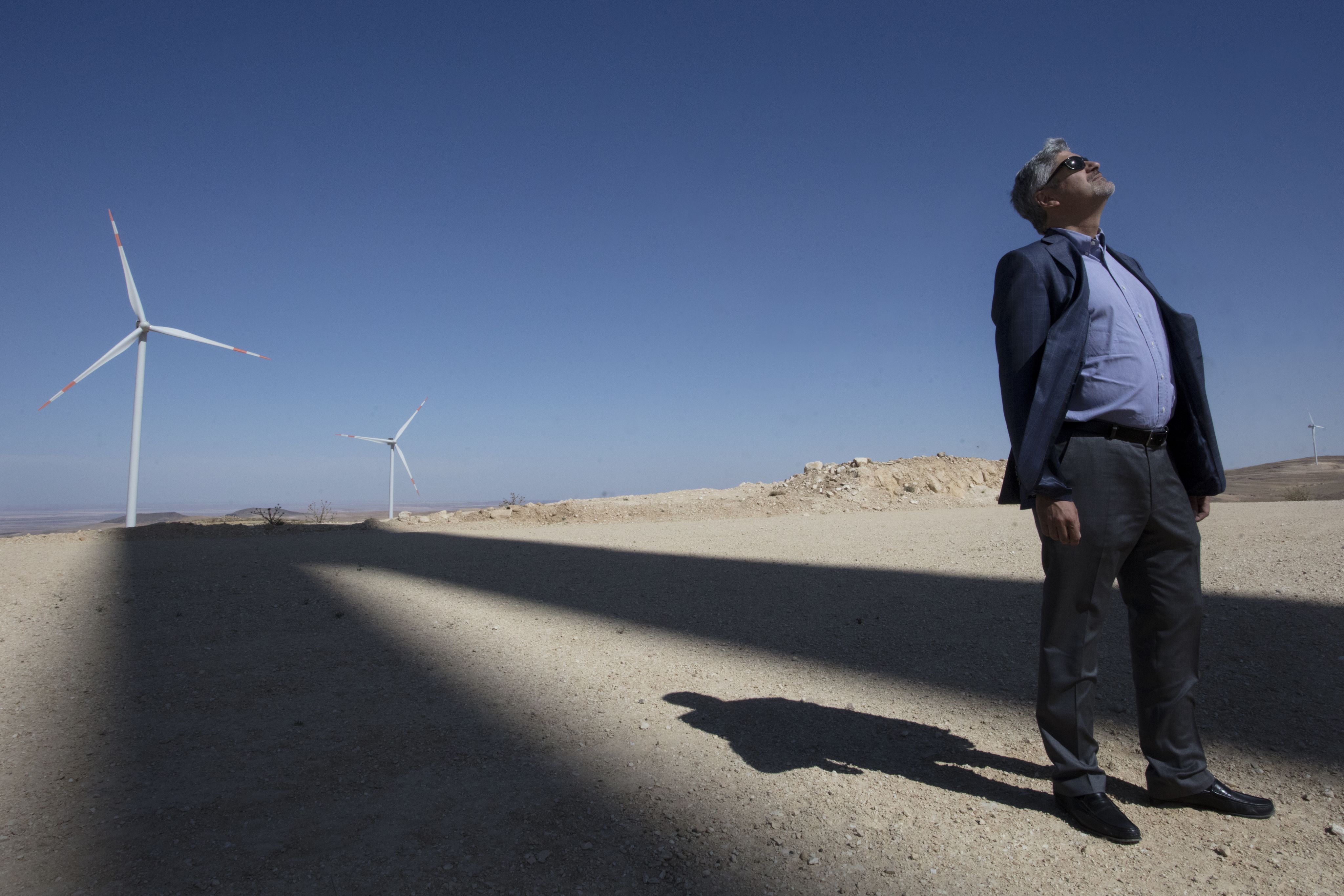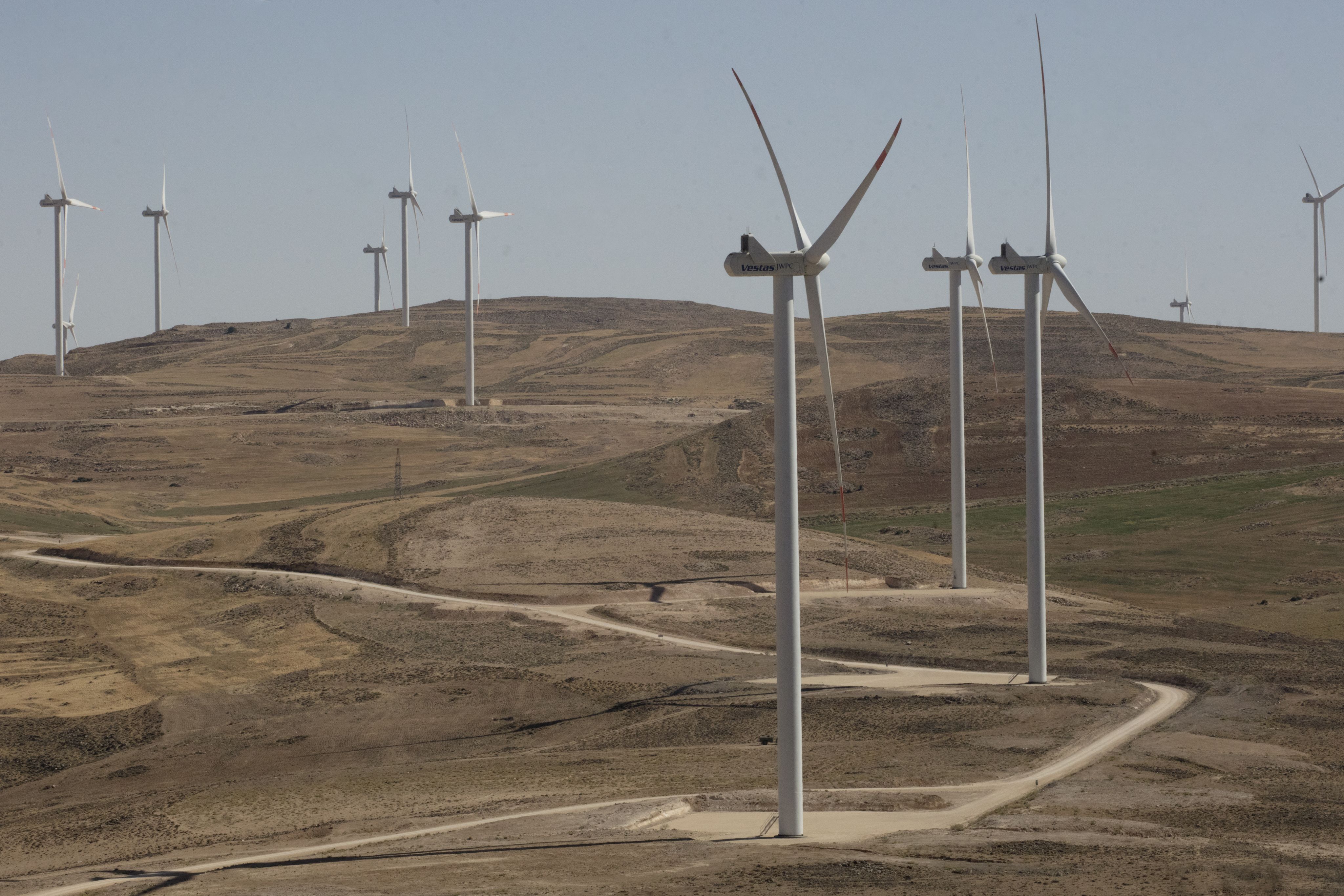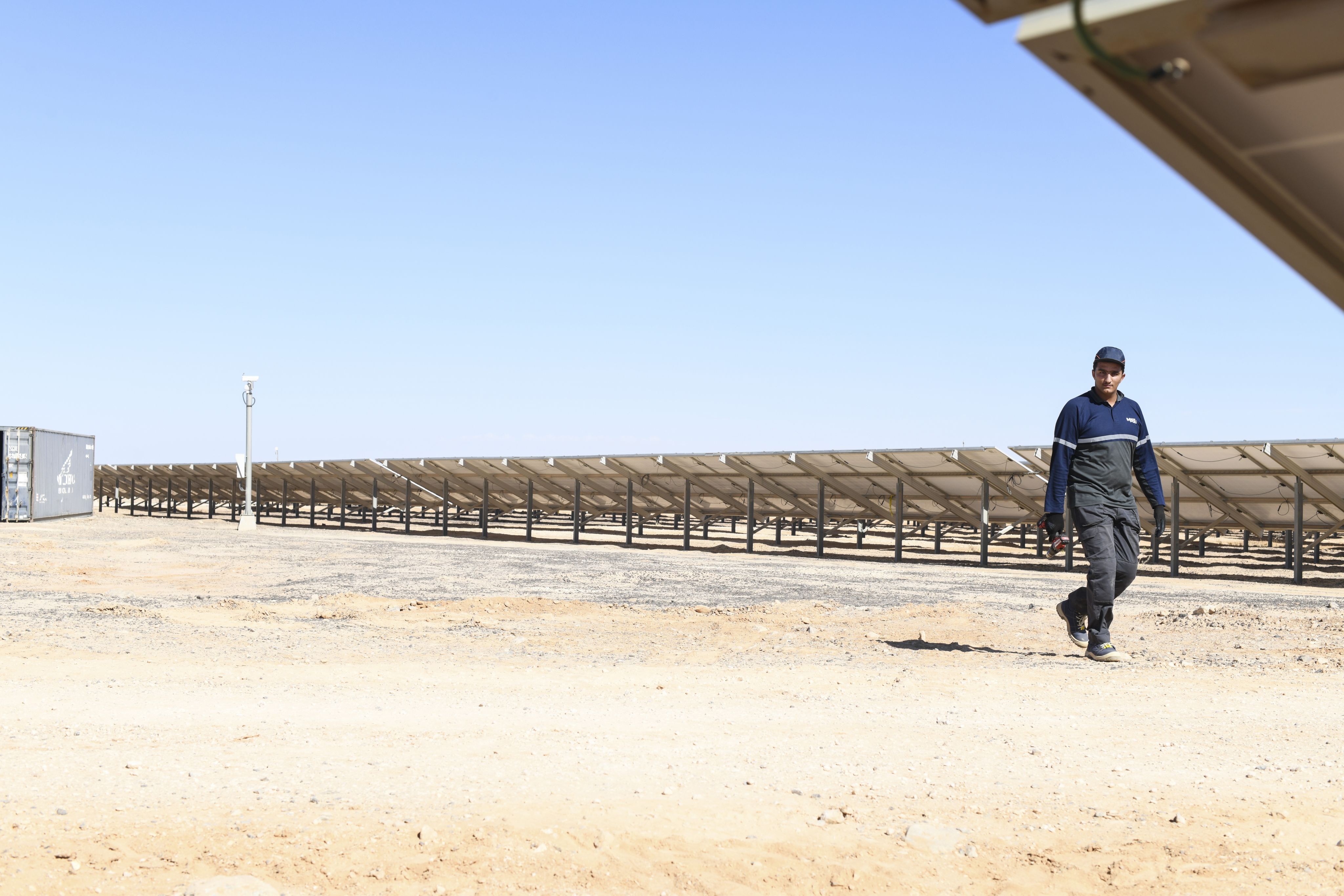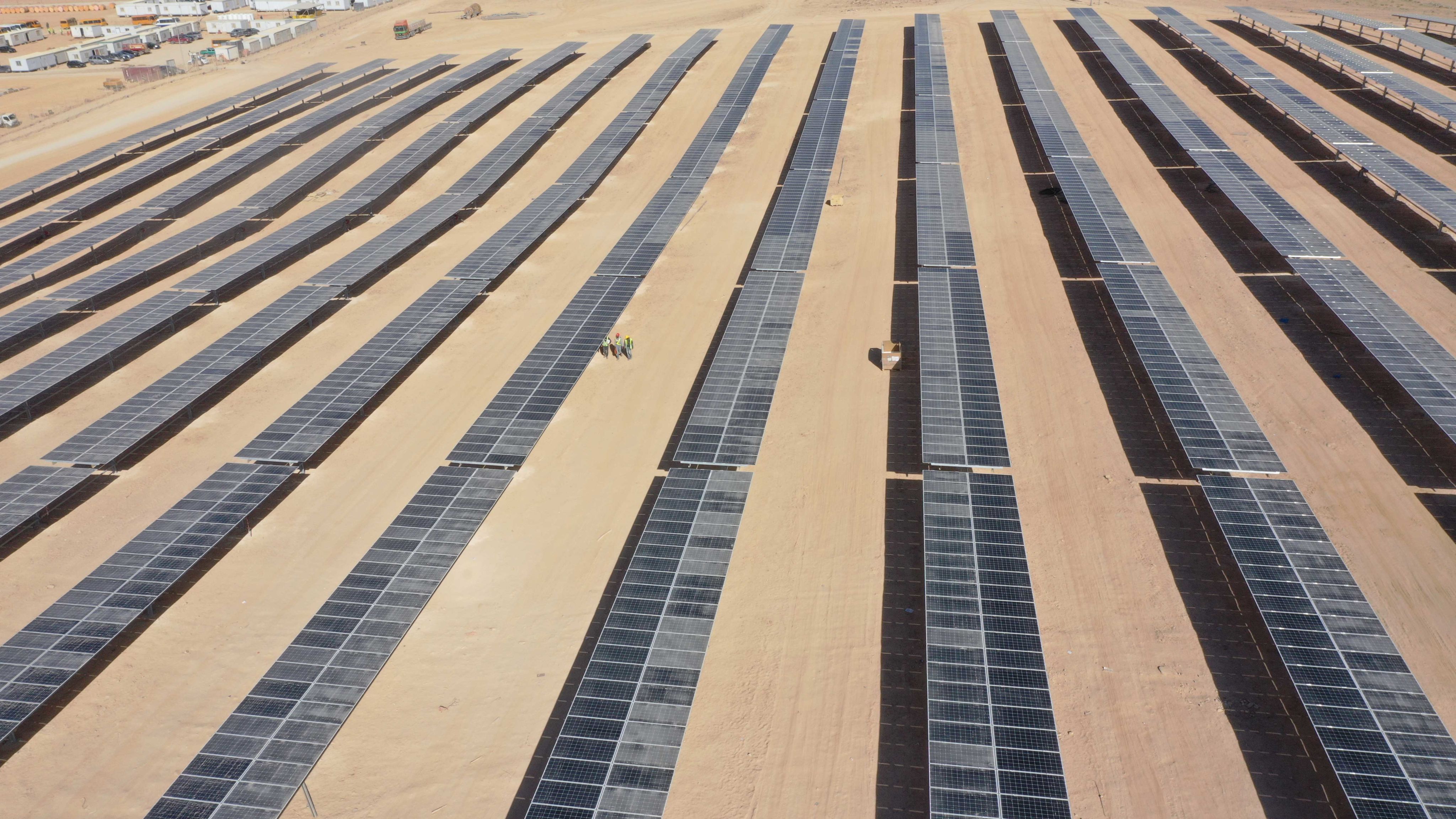Powering up Jordan's Renewable Energy Market
Energy from wind and solar covers nearly one-third of Jordan's electricity needs—a significant jump from 10 years ago, when no renewable energy resources were used. Jordan’s experience creating this new market offers a roadmap for other countries.

A lot can happen in a decade.
Just ask Samer Judeh, Chairman of the Jordan Wind Project Company (JWPC). Ten years ago, there was no legislation for renewable energy in place and no interest from local or international investors to support any renewable projects in Jordan. Though Judeh and some other forward-looking leaders had been advancing the idea that Jordan’s natural resources could help meet the urgent demand for green energy, moving forward seemed fraught with obstacles, Judeh remembers.

Samer Judeh. Photo by Dominic Chavez/IFC.
Samer Judeh. Photo by Dominic Chavez/IFC.
But Judeh, along with a group of visionary international investors, refused to give up and met with IFC to brainstorm on a bold proposal: developing the country’s first privately financed wind farm. “We were dreamers” he says, his face lighting up at the memory.
Just a few years later, in 2015, this "impossible idea”—the Tafila Wind Farm—had become a reality. It was the Middle East’s first and largest privately financed utility-scale wind project.
The process behind the development of the Tafila Wind Farm, and other renewable energy projects in Jordan that followed, demonstrates how multiple partners can come together to establish a successful new market from scratch, Judeh believes.
Because of these efforts, Jordan now ranks 15th globally and first in the Middle East for the share of electricity that is sourced from solar and wind generation. In 2013, before these initiatives began, it ranked 145th globally.
“Jordan also went from zero investments in solar and wind projects in 2013 to attracting more than $4 billion in investments in renewable energy projects by 2023. And most of these investments came in from outside Jordan,” Judeh adds.
The creation of this new market also offers significant environmental benefits. Jordan went from having zero CO2 diverted from solar and wind projects in 2013 to diverting more than 3.3 million tons of CO2 annually in 2022, which is the equivalent to taking 730,000 passenger cars off the road each year.
“Jordan’s impressive renewable energy journey is a stellar example of the vast impact that the joint mobilization of resources can have,” says Makhtar Diop, IFC Managing Director. “It is also a reminder that it is only through partnerships that countries can move the needle. This is how Jordan positioned itself as a leader in the world energy map in just ten years and inspired other countries to follow suit.”

Tafila Wind Farm
JWPC’s Tafila Wind Farm, which is owned by Masdar, Tamasuk and APICORP, laid the groundwork for the establishment of Jordan’s renewable energy market. The project established confidence in the international market for lending and foreign direct investments in Jordan’s renewable energy space, according to Judeh. The project was important because it tested the existing legal framework for such projects; helped develop a comprehensive regulatory and pricing framework which could be applied in other projects, including for using various renewable energy technologies; and provided project documentation templates for subsequent projects.
A $221 million financing package made the Tafila Wind Farm possible. IFC invested in it and also brought in the Organization of the Petroleum Exporting Countries (OPEC) Fund for International Development, the Dutch entrepreneurial development bank (FMO), Europe Arab Bank (EAB), the Danish growth fund Vaekstfonden (EFK), and the European Investment Bank (EIB).
The key was that “these financial institutions were not just lenders, they were true partners,” Judeh notes.

Seven Sisters
Building on this foundation for renewable energy in Jordan, in 2015, seven independent solar projects were aggregated into one program called “Seven Sisters.” This was Jordan’s first round of seven solar projects and the largest privately owned solar project in the region at the time. This “scaling” approach helped overcome the challenges that each individual project would have faced by bringing together all different projects into one single financing program, helping attract more investors and financiers and allowing project developers to share costs and resources.
“The right regulatory reforms and legislation were in place for us to enter the market and invest in it,” says Karim Elazzawy, Country Manager for Egypt and Jordan at Voltalia, a leading international energy producer and service provider.
Voltalia invested in four of the seven solar photovoltaic power plants of the Seven Sisters in 2020. This was made possible by a 20-year public utility contract through which revenues were dollarized and guaranteed by the government of Jordan, Elazzawy adds.

Baynouna Solar Park
These projects catalyzed a line-up of even more investment in solar. For instance, the UAE-based Masdar, one of the world’s largest renewable energy companies, invested in the development of Jordan’s Baynouna Solar Park, a $260 million project.
“The enabling environment was there for investors from outside Jordan to come in,” says Ali Buhaji, Masdar’s Head of Development & Investment for the Middle East and North Africa.
The Baynouna Solar Park is the largest single solar energy project in the country and supplies the annual power needs of approximately 160,000 homes. It displaces the carbon dioxide equivalent to 4 percent of the annual energy consumption of Jordan.
“Such projects can be game-changers, especially when it comes to addressing climate change,” Buhaji says.

Together, these three projects, along with several other smaller-scale initiatives over the last 10 years, have established Jordan “as a center for green energy production,” says H.E. Minister of Energy and Mineral Resources, Saleh A. Al-Kharabsheh. Each one has contributed to “the tremendous success we achieved in the renewable energy space.”
But success doesn’t depend only on projects and investments; it’s also about the people who drive them, says Judeh, the “dreamer” behind the Tafila Wind Farm. “It takes visionary people—investors, lenders, technical advisors, legal advisors, and the government—to work together on the same side of the table to create a new market,” he says.
Whether one single infrastructure project is under consideration or several smaller ones are combined together, as in case of the Seven Sisters, developing larger scale projects is critical to attract investments—while well-established regulations and processes are essential to successful mobilization of capital.
IFC has therefore been applying the same approach to other markets and countries by convening the government, financiers and other key partners for transactions that include multiple projects, according to Bulent Ikiisik, Regional Manager for Infrastructure in the Middle East, Pakistan and Afghanistan at IFC.
In Egypt, for example, IFC arranged the $653 million financing package for the Nubian Suns Feed-in-Tariff Financing Program in 2017. That project comprises 13 solar power plants and is part of the Benban Solar Park, one of the largest solar installations in the world, Ikiisik says.
In addition, in early 2023, IFC, AMEA Power, and other partners invested $1.1 billion to build the largest solar plant and wind farm in Egypt, the 560MW Abydos Solar PV and 505MW Amunet Wind independent power projects.
Moving forward, Jordan’s government plans to continue to build on its momentum. “We are aiming to capitalize on what we have already achieved and have half of Jordan’s energy come from renewables by 2030 while we continue to work with the private sector and develop our green hydrogen strategy,” notes Al-Kharabsheh.
Published in December 2023
Story produced by Alison Buckholtz